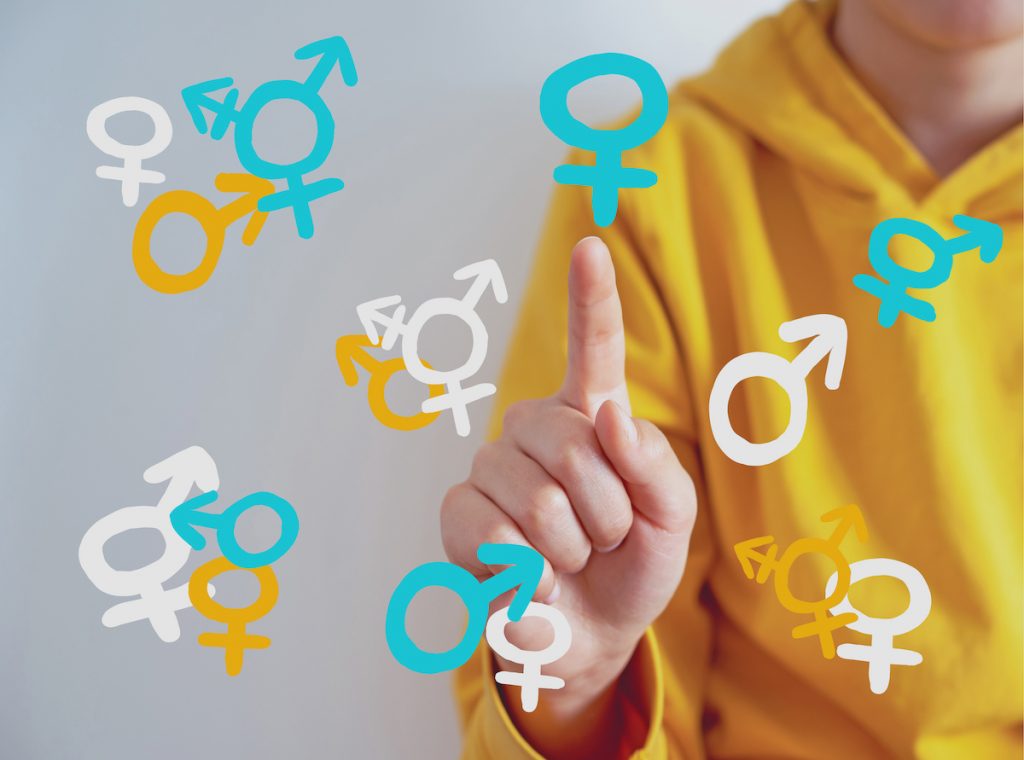
Minority stress theory poses that minoritised individuals experience unique and hostile stressors due to their minority status, such as their sexuality and gender identity (Meyer, 2003). This theory aligns with the experience of individuals whose gender does not correspond with their sex registered at birth. This group includes (but is not limited to) trans and non-binary individuals, as well as those whose gender is fluid or are unsure of their gender. These individuals are at higher risk for mental health difficulties, in part due to gender dysphoria. This is the intense psychological discomfort that is associated with the incongruence between sex at birth and gender. Consequently, coping strategies may be used, including (excessive) alcohol consumption.
In previous studies, associations between minority stressors and hazardous drinking have been reported in different sexual minority groups. A positive association has been found between hazardous alcohol drinking and sexual victimisation (Hughes et al., 2010), sexual and physical violence (Drabble et al., 2013), and minority stress (Mason et al., 2016) among sexual minority women. However, drinking behaviours in trans and non-binary people may also serve a positive function, as nightlife plays an important role in exploration, celebration and acceptance of identity in trans and non-binary individuals, making the motives of alcohol use important for determining its effects on mental health and functioning.
To address this current gap in the literature, a recent study by Davies et al., (2023) explores the relationship between alcohol consumption, drinking motives, alcohol harms and risk factors such as discrimination and distress in a UK sample of non-binary and trans individuals.

Hazardous drinking behaviours have been associated with unique stressors reported in sexually minoritised groups.
Methods
The researchers conducted an online cross-sectional survey study using Qualtrics software. Participants had to be at least 18 years old, based in the UK, have a history of alcohol use, and identify as trans, non-binary, genderqueer, or gender non-conforming. The following outcome measures were collected:
- Demographics including age, location, ethnicity, gender, gender identity, sex registered at birth, pronouns, sexual orientation, education, and employment.
- Data on alcohol-related harms to assess the risk of dependence and experienced harms were measured by two questionnaires. The Alcohol Use Disorders Identification Test (AUDIT), was used as a screening tool to measure the risk of hazardous, harmful, and dependent alcohol. 13 specific alcohol-related harms were measured including missing work or study, taking more sexual risks than usual, being sick, and embarrassed.
- Gender dysphoria with the use of the Transgender Congruence Scale to measure the congruence between current gender expression and desired gender.
- Discrimination, gender minority stress and distress were measured by a seven-item scale (Arayasirikul et al., 2017) specifically for a trans and non-binary sample.
- Current levels of mental distress were measured by the six-item Kessler scale.
- Loneliness was measured by the three-item UCLA loneliness scale, where a higher score indicated a higher loneliness.
- To assess drinking motives, the revised drinking motives questionnaire (DMQ-R) was used. This scale includes four dimensions: conformity (negative/external), coping (negative/internal), enhancement (positive/internal), and social (positive/external). Two additional motives were added to the list by the advisory group: ‘How often do you drink to manage your gender dysphoria?’ and ‘How often do you drink to have sex?’
Importantly, due to the possibility of individuals selecting multiple identities, some categories had limited representation. As advised by the study’s community advisory group, responses were consolidated into five categories: man only, woman only, non-binary and/or genderqueer, other gender identity, and multiple gender identities, excluding non-binary and genderqueer individuals represented in the third category.
Gender differences were compared using ANOVA. Subsequently Pearson correlations explored relationships between measures, and regression models with the entire sample predicting AUDIT scores, and harms. Significant predictors were drinking motives, discrimination, psychological distress, and drinking behaviors related to gender dysphoria and sexual activity, with mediation analysis suggesting a potential role of drinking motives in mediating the relationship between discrimination and AUDIT.
Results
A total of 462 people were included, of which 159 people identified as non-binary and/or genderqueer, 135 solely as women, 63 solely as men, 15 as another gender identity, and 90 people selected multiple gender identities. The age range was 18 – 76, although 30% of the respondents did not input their age. 91.3% of the sample reported being white.
Significant differences were found between gender groups for AUDIT scores, and gender congruence. Men had higher AUDIT scores compared to women and those with multiple gender identities. Participants identifying as non-binary and/or genderqueer reported significantly lower experiences of discrimination.
Those identifying as non-binary and/or genderqueer, as well as those with other gender identities, reported lower total gender congruence scores compared to men or women. AUDIT scores were significantly positively correlated with all other measures except social and conformity motives. Thus, as AUDIT scores increased, so did the scores on measures like discrimination, gender congruence.
The strongest correlations between the outcome variables, AUDIT scores and harms, and experiences of discrimination were observed in men. Coping motives, enhancement motives, and drinking to manage gender dysphoria were identified as significant contributors. These factors had a notable impact on explaining the variance in AUDIT scores. Among the contributors, coping motives emerged as the most influential predictor in the model. Additionally, social motives emerged as a prominent predictor of alcohol-related harms.

Individuals solely identifying as men experienced stronger positive effects of discrimination on harmful alcohol drinking compared to other gender identities.
Conclusions
The study found that when people experienced more discrimination, they tended to have higher scores on the AUDIT, and reported more negative effects from drinking. The link between discrimination and alcohol use was mediated by using alcohol to cope and manage dysphoria. Additionally, the connection between discrimination and negative effects from drinking was influenced by coping motives, managing dysphoria with alcohol, and drinking for sexual reasons.

High coping and gender dysphoria strengthen the positive effect of discrimination on harmful alcohol drinking in the entire sample.
Strengths and limitations
A unique strength of this study was the co-production with an Expert by Experience (EbE) group of trans and non-binary people who reported current or historical alcohol use, who were rewarded for their involvement in the project. Throughout the entire process of the development, execution, and writing up of the study, the group was consulted to ensure maximal inclusivity and all feedback was incorporated into the study. This is reflected by the carefully adapted questionnaires that ensure inclusivity and examine constructs that are clinically relevant for these individuals. The group members were included as co-authors in associated manuscripts. As a reader, the description of the EbE involvement helps to understand the nature of co-production and appreciation of consultants. In addition, the study was preregistered at the Open Science Framework, which is good scientific practice and indicates transparency and replicability of the study.
One of the main limitations of this study is its cross-sectional nature, making it impossible to conclude if something is a risk factor. Moreover, a few important confounders are not assessed, such as other drug use, which is known to be associated hazardous drinking behaviours. A big proportion of the sample reported having multiple gender identities, and the research team collapsed these individuals into main categories to allow for the statistical analyses. Although this was an action agreed in consultation with the EbE advisory group, it would have been interesting to have more information on the reasoning behind the categorisation, as well as if and why this may affect interpretation of the results and implications of the study given the nuances in sexual orientation and gender identity. Lastly, reporting could have been clearer in regards to the methodology and results sections, as the number of participants reported differs and no reasoning is provided by the authors.

This study offers a good example of meaningful involvement of experts by experience across all research stages.
Implications for practice
Substance use and the mental health consequences in trans and non-binary individuals is currently still understudied, although these individuals are at increased risk of mental illnesses. This study highlights that alcohol use is increased in this community, and is associated with risk factors, using patterns and motives of alcohol use differ based on gender.
Clinicians working with non-binary and trans people should be aware that the healthcare system is still predominantly designed to account for the needs of cis men and women, which can lead to further distress in queer folk. Efforts to improve this include, but are not limited to, expanding administration forms to not only include male/female, using correct pronouns in both clinical documents (i.e., letters) and therapy, and giving service users the ability and power to change their name in the medical records if they wish to. Clinicians need to engage in training to understand the needs of LGBTQ+ community and how these needs may differ from their cis-gender and heterosexual counterparts, as well as why their mental health outcomes may differ. The familiarisation with the evidence base and latest research on LGBTQ+ mental health is crucial in day-to-day clinical practice to allow the application of tailored approaches in therapy. This study shows that hazardous drinking is influenced by mental health difficulties, such as gender dysphoria and coping, and can be formulated and understood within the wider context of minority stress theory. Increasing safety and inclusivity in healthcare settings needs to be prioritised.
The authors have published another study as part of this project exploring alcohol reduction, and found that people would like to have access to self-help interventions, but also expressed interest in tailored alcohol reduction services and inclusivity in the healthcare settings (Connolly et al., 2023). Further research needs to be conducted to understand barriers and facilitators seeking support for alcohol management and therapeutic interventions.

We need to prioritise psychoeducation, training and affirmative care in the healthcare system to improve the mental health of trans and non-binary people.
Links
Primary paper
Davies, E. L., Ezquerra-Romano, I., Thayne, B., Holloway, Z., Bayliss, J., O’Callaghan, S., & Connolly, D. J. (2023). Discrimination, gender dysphoria, drinking to cope, and alcohol harms in the UK trans and non-binary community. Alcohol and alcoholism (Oxford, Oxfordshire), agad060. Advance online publication.
Other references
Arayasirikul, S., Wilson, E. C., & Raymond, H. F. (2017). Examining the Effects of Transphobic Discrimination and Race on HIV Risk Among Transwomen in San Francisco. AIDS and behavior, 21(9), 2628–2633.
Connolly, D. J., Thayne, B., Bayliss, J., Hughes, X., Holloway, Z., O’Callaghan, S., & Davies, E. (2024). Transgender and non-binary people’s experiences with alcohol reduction in the UK: A cross-sectional study. Journal of Substance Use and Addiction Treatment, 158, 209246.
Drabble, L., Trocki, K. F., Hughes, T. L., Korcha, R. A., & Lown, A. E. (2013). Sexual orientation differences in the relationship between victimization and hazardous drinking among women in the National Alcohol Survey. Psychology of addictive behaviors, 27(3), 639.
Hughes, T. L., Szalacha, L. A., Johnson, T. P., Kinnison, K. E., Wilsnack, S. C., & Cho, Y., . Sexual victimization and hazardous drinking among heterosexual and sexual minority women. Addictive behaviors, 35, 12, 2010, 1152-1156.
Mason, T. B., Lewis, R. J., Gargurevich, M., & Kelley, M. L., . Minority stress and intimate partner violence perpetration among lesbians: Negative affect, hazardous drinking, and intrusiveness as mediators. Psychology of sexual orientation and gender diversity, 3, 2, 2016, 236.
Meyer, I. H. (2003). Prejudice, social stress, and mental health in lesbian, gay, and bisexual populations: conceptual issues and research evidence. Psychological bulletin, 129(5), 674.
Photo credits
- Photo by Paloma A. on Unsplash
- Photo by Aleksandr Popov on Unsplash
- Photo by AllGo – An App For Plus Size People on Unsplash
